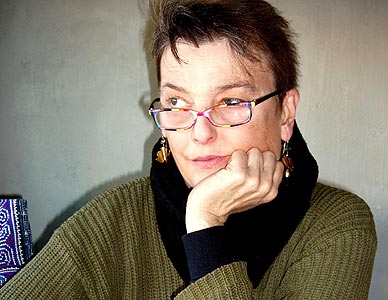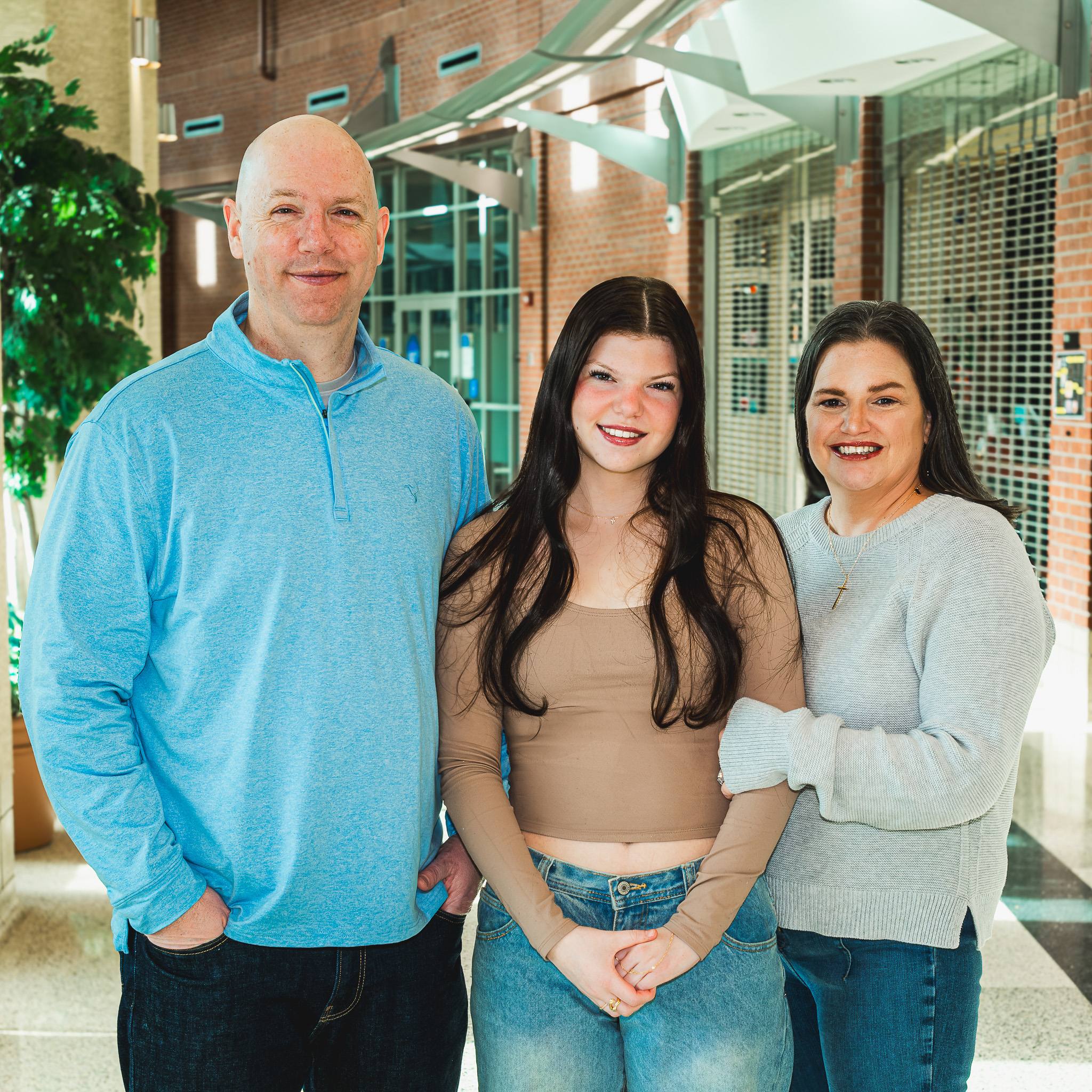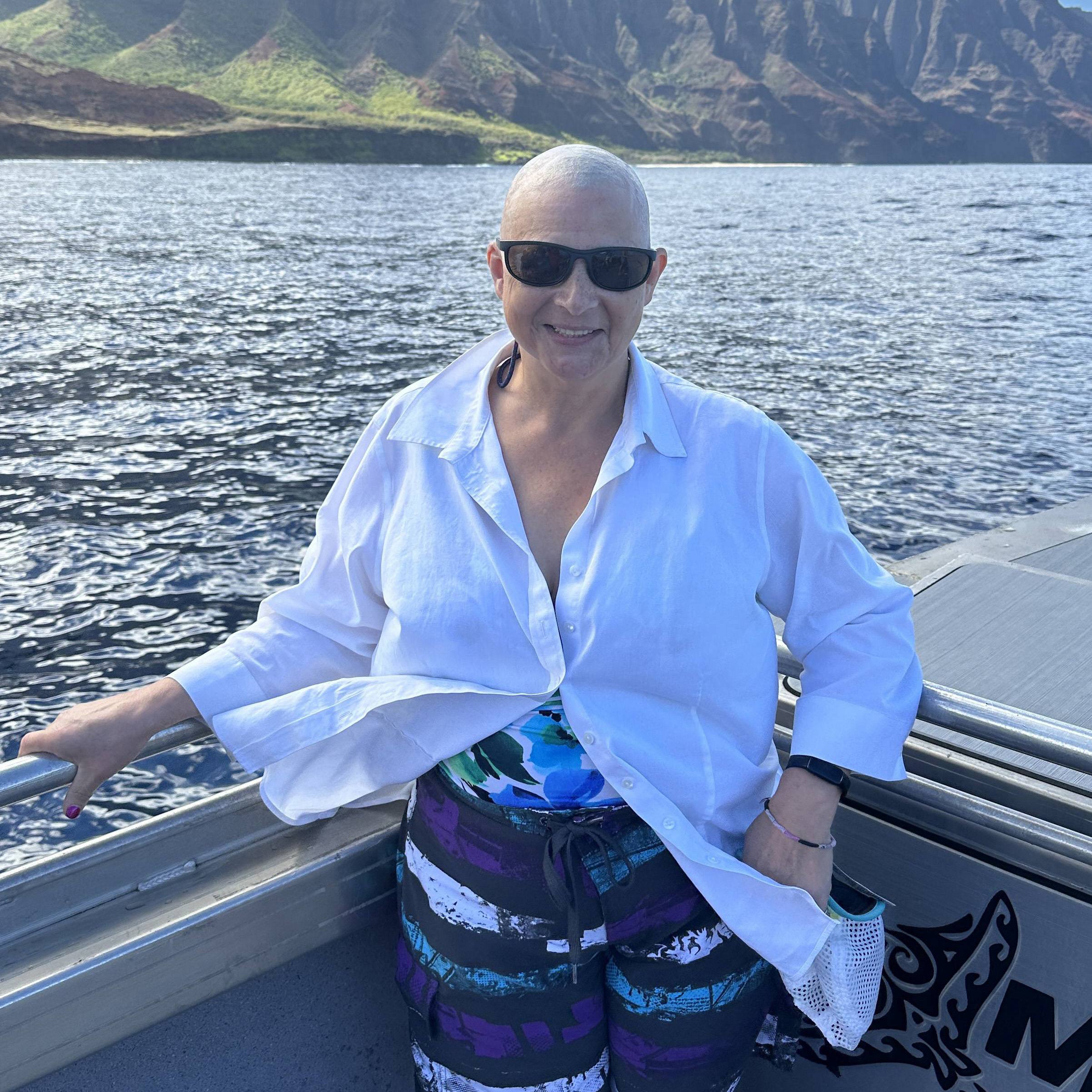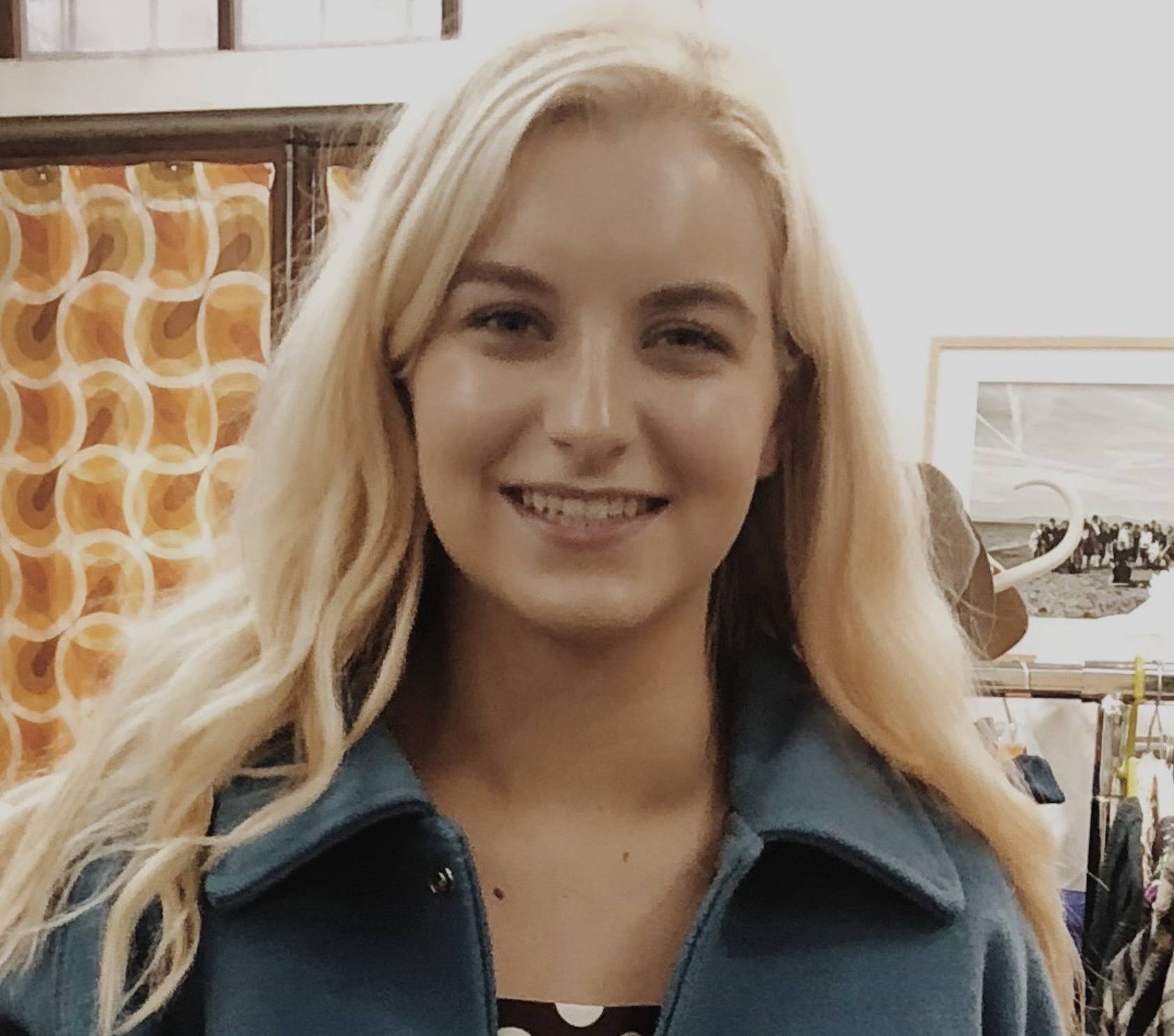 Whether instructing art classes or modeling for students, Cynthia Amendt has always been a teacher. When she was diagnosed with a glioblastoma — a deadly brain tumor — Cynthia thought her teaching days might be over. Then she joined a clinical trial at Mayo Clinic and now realizes she's received her most important teaching assignment ever — helping medical researchers learn about a drug that has recently demonstrated potential for extending the life of patients with glioblastoma multiforme.
Whether instructing art classes or modeling for students, Cynthia Amendt has always been a teacher. When she was diagnosed with a glioblastoma — a deadly brain tumor — Cynthia thought her teaching days might be over. Then she joined a clinical trial at Mayo Clinic and now realizes she's received her most important teaching assignment ever — helping medical researchers learn about a drug that has recently demonstrated potential for extending the life of patients with glioblastoma multiforme.
Nearly four years ago, Cynthia was diagnosed with a glioblastoma, the highest grade glioma (grade 4) tumor and the most common and aggressive type of primary brain tumor. Glioblastomas account for 52 percent of all primary brain tumor cases and 20 percent of all intracranial tumors. Despite being the most prevalent form of primary brain tumor, however, in Europe and North America glioblastomas occur at a rate of just 2 to 3 cases per 100,000 people. Although these tumors can occur at almost any age, they're most common after 50 years of age.
"I was modeling for an advanced painting class and wanted to read the students a humorous article I found in the daily newspaper," recalls Cynthia, who as a teacher was comfortable speaking in front of a classroom. "I could see the words on the paper and process them in my head, but I could not vocalize them," she remembers. "I could not make myself speak the words my eyes saw, and knew something was wrong."
"It is typical not to have any indications of a gliblastoma until there is major neurologic injury to the brain," says Jan Buckner, M.D., a medical oncologist at Mayo Clinic in Rochester, Minn. Symptoms include mobility impairments, seizures and other cognitive disorders. "In the majority of cases, the disease is far advanced by the time a diagnosis is made, which is why this type of tumor is so difficult to treat. And, even after successful treatment with external beam radiation, the tumor reoccurs in more than 95% of cases," notes Dr. Buckner, "and radiation therapy cannot be used again."
Painting the picture
Cynthia was born and raised in Alhambra, California — living in an 1878 Redwood forest farmhouse surrounded by a giant California Live Oak and sequoia, orange, loquat, fig and bay laurel trees. "Ours was the oldest home in the city," says Cynthia, "and I believe my surroundings inspired the artist in me."
In high school, Cynthia learned jewelry making, but was always very interested in photography. She pursued a degree in radio-TV-film from San Diego State University to have a "fall back" plan in case her interest in the arts could not provide a living. In 1977, she moved to Minneapolis, Minn., to explore another area of the country and a city that was rich in art.
"Minneapolis is a great city for the arts," says Cynthia, who has taught jewelry making, drawing and photography in the Twin Cities area, where she is best known for her eclectic vintage Volvo station wagon. "My artist friends and I painted the entire car with all types of colorful art forms," she says.
"I also do 19th century non-silver processes, in addition to black and white photography," says Cynthia, "and was involved in a photography project that took me to Paris and Cuba when I was diagnosed with brain cancer."
She initially had treatment in Minneapolis, which included both radiation and chemotherapy. "But my tumor didn't respond," explains Cynthia, "and I had terrible reactions and side effects." Essentially, Cynthia's treatment was ineffective and doctors told her they were running out of options.
Cynthia remembers the day she called her father to tell him that her treatment wasn't working. "He was a commercial airline pilot and used to have his aviation physicals at Mayo Clinic. He was so impressed with his visits to the clinic that he said I should go there. And, he offered to call and get me an appointment," she says. Soon, Cynthia found herself under the care of Dr. Buckner and the very first participant in a new clinical trial aimed at extending the survival time of patients with glioblastoma.
Finding hope at Mayo Clinic
Treatment of glioblastoma can involve chemotherapy, radiation therapy and surgery, all of which are acknowledged as palliative measures, meaning that they do not provide a cure. The five-year survival rate of the disease has remained unchanged during the past 30 years and stands at less than 3 percent. Even with complete surgical resection (removal) of the tumor, combined with the best available treatment, the survival rate for glioblastoma remains very low.
"Mayo Clinic sees hundreds of patients with glioblastoma each year," says Dr. Buckner. "And when you have a disease that's incurable with a survival rate basically unchanged for several decades, you embark on research to help advance clinical care and patient outcomes." Dr. Buckner also chairs the North Central Cancer Treatment Group (NCCTG), a national consortium of community oncology practices with leadership at Mayo Clinic, and the Mayo Clinic Cancer Research Consortium in Rochester.
The clinical trial involves vorinostat (suberoylanilide hydroxamic acid), sold under the brand name Zolinza®. Mayo Clinic researchers are currently investigating this drug for the treatment of glioblastoma when the disease persists, gets worse, or comes back during or after treatment. It is the first in a new class of agents known as histone deacetylase inhibitors.
Further brain tumor trials are planned in which vorinostat will be combined with other drugs. Vorinostat is currently FDA-approved for the treatment of leukemia, but holds promise for increasing median overall survival time of patients with glioblastoma. The clinical trial is a collaborative effort between Mayo Clinic and NCCTG.
"This clinical trial is open to people in other communities," explains Dr. Buckner. "In fact, we now have more than 100 patients participating from Hawaii, Kansas and South Carolina." The promising results were presented in June 2007 at the American Society of Clinical Oncology.
"When I came to Mayo Clinic, my tumor was 4.0 by 3.4 centimeters," explains Cynthia. "After 18 months on the clinical trial, my tumor measures 2.9 by 2.0. This is remarkable and has prevented further neurological damage, while extending my life." Cynthia has only minor loss of sensation on her right side and speaks a bit more slowly than she used to. "I still drive, live comfortably by myself, enjoy gardening and remain involved in the arts," she says.
Cynthia is especially grateful for the continuity of care of Mayo, given that she lives 100 miles away. "Dr. Buckner's specialty expertise in this disease is above and beyond anywhere else," she says. "When a doctor can see patients with a specific disease for 20-plus years, they really understand it inside and out. This is a major strength of Mayo." In addition, answers to Cynthia's questions are always just a phone call away. "The clinical research associates manage the logistics of my care and arrange my visits so I can have all my tests, get my medicine and see Dr. Buckner in one visit," says Cynthia.
"This is really one of the first NCCTG clinical trials that shows promise for patients with glioblastoma," says Dr. Buckner. "Vorinostat works by preventing DNA reproduction in tumor cells, opening up a new therapeutic strategy for brain tumor patients."
Living in the present
With her disease currently under control, Cynthia has learned some valuable life lessons and remains optimistic about the future.
"I advise people to explore their passions now — don't wait," she says. "And don't sweat the small stuff in life." Cynthia has had to make some concessions in her life because of her disease, but she isn't giving up. "You make adjustments to your game plan, but you don't fall down and roll over," she says. For example, she's training her youngest golden retriever to be a service dog just in case she needs assistance someday, and she's building a darkroom in her house so she can stay involved in photography.
"Be grateful for each day and focus on the quality of your life," Cynthia recommends. "I really value the additional time I've been given thanks to Mayo's clinical trial. I would recommend that anyone who can participate in a trial to advance medicine do it."
So, as an art model, Cynthia allows students to study and learn about the outside of her body; today, she's turned things inside out. "Now, I'm allowing researchers to learn about the inside of my body," she says. "I'm not only helping these medical investigators, but future patients as well. It's a different angle, but I'm still the teacher."







